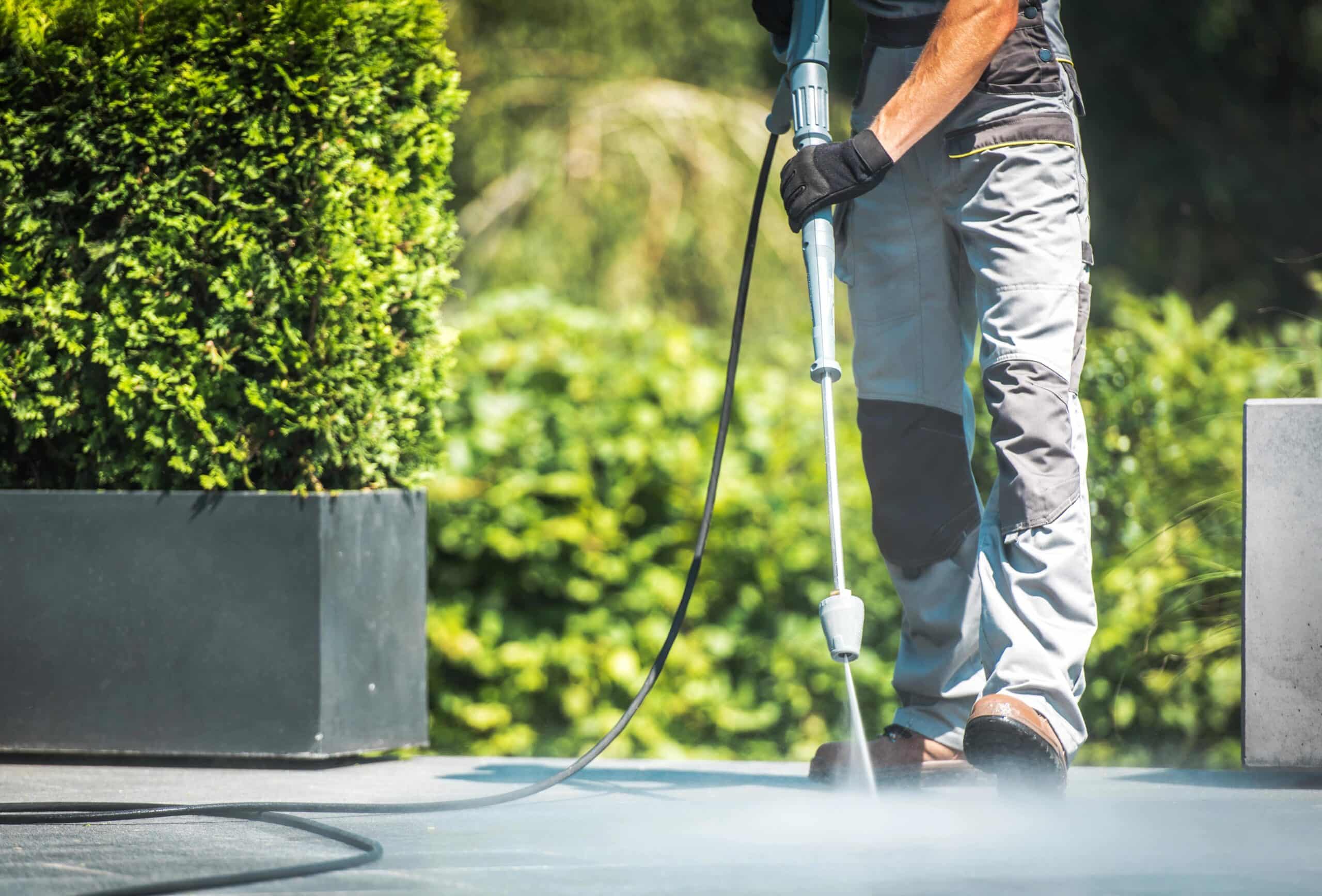
Power washing is an undeniably satisfying way to clean — watching layers of dirt, grime, and algae vanish with a blast of water is every homeowner’s dream. But what about the environmental impact? Is it possible to power wash effectively and responsibly? 🌎🧼
The answer is yes — but only if you’re informed and intentional about how you do it.
In this article, we’re diving into the world of eco-friendly power washing. From water use to biodegradable detergents, here’s how to make your cleaning routine powerful and planet-friendly. 💪🌍
🌊 Why Traditional Power Washing Can Be Harmful
Let’s start with the uncomfortable truth — traditional power washing isn’t always eco-friendly by default.
Here are the main concerns:
- Water waste: A standard power washer uses 2–5 gallons of water per minute
- Chemical runoff: Harsh detergents can pollute storm drains and local waterways
- Damage to plant life: Overspray can affect grass, shrubs, and soil
- Air pollution: Gas-powered washers emit fumes and carbon monoxide
But the good news? With just a few adjustments, you can minimize environmental harm without sacrificing results. ✅
🧴 Choose the Right Detergents (It Matters!)
Most people don’t realize how much damage the wrong soap can do. Bleach, phosphates, and petroleum-based cleaners can all harm aquatic life and contaminate groundwater. 🐠❌
✅ Look for:
- Biodegradable formulas (break down safely in the environment)
- Non-toxic ingredients
- Plant-safe and pet-safe labels
- EPA Safer Choice certification
Some great eco-friendly detergent types include:
- Citrus-based degreasers 🍊
- Vinegar-based solutions
- Oxygenated cleaners (like Oxi-clean variants)
- Enzyme cleaners
🌿 Pro Tip: Even with safe products, avoid overuse. More soap doesn’t mean better cleaning.
Browse Amazon Here For Biodegradable Pressure Washing Detergents
💧 Reduce Water Waste: Be Smart About Usage
A typical gas-powered pressure washer can use up to 5 gallons of water per minute — that’s 300 gallons in just an hour. 🚿💸
To conserve water:
- Use lower pressure settings when possible
- Select a narrow nozzle angle to target specific spots
- Use a trigger gun to control the flow between sections
- Pre-soak dirty areas to reduce total wash time
- Turn off the washer when not actively cleaning
Even better? Some newer electric pressure washers come with eco modes or flow regulators built in. ⚡💧
🌱 Protect Landscaping and Soil
Power washing overspray can affect everything it touches — including your garden, lawn, and trees.
To minimize damage:
- Water plants before and after cleaning to dilute exposure
- Cover delicate flower beds with breathable tarps or drop cloths
- Redirect runoff away from mulch or topsoil
- Avoid using harsh chemicals near edible plants or vegetable gardens 🥕🍅
👨🌾 Healthy landscaping doesn’t have to suffer for a clean house.
♻️ Dispose of Waste Properly
Did you know storm drains often lead straight to natural bodies of water, not treatment facilities?
Never let detergent or dirty runoff flow into:
- Gutters
- Storm drains
- Sewers
- Ditches
Instead:
- Use a wet-dry vacuum to collect wastewater when washing driveways or garages
- Wash on permeable surfaces (like grass or gravel) when possible
- Block off storm drains with sandbags or barriers
- Check local regulations — some cities prohibit power washing without a water collection system
💡 Responsible disposal is key to making your cleaning process truly green.
🔌 Go Electric When You Can
Gas-powered washers are powerful — but they’re noisy, heavy, and release emissions. If you’re focused on sustainability, electric pressure washers are the way to go.
Advantages:
- Zero emissions at the point of use
- Quieter operation (better for neighbors and wildlife)
- Lighter and easier to handle
- Often more water-efficient
🔋 Bonus: Electric washers pair well with solar power if you’re off-grid or using green electricity.
🧽 Try These Eco-Friendly Cleaning Projects
If you’re ready to embrace green power washing, here are ideal projects to start with:
- Home siding with a biodegradable detergent
- Driveways using only water and a surface cleaner
- Wooden decks treated with an oxygen-based wood cleaner
- Outdoor furniture with vinegar and water mix
- Windows and trim using gentle, phosphate-free soap
🪟 The goal is to clean effectively without leaving a trace behind.
📅 How Often Should You Power Wash to Stay Green?
Frequent over-washing wastes water and exposes surfaces to unnecessary wear.
Stick to this eco-friendly schedule:
| Surface | Eco-Friendly Frequency |
|---|---|
| Siding | Every 1–2 years |
| Driveway | Once per year |
| Deck/Patio | Once per year |
| Fences | Every 2–3 years |
| Roof (soft wash) | Every 3–5 years |
🧠 Think quality over quantity — clean with intention, not just out of habit.
🛠️ Extra Tools That Help You Go Green
- Surface cleaners (use less water and detergent)
- Foam cannons (spread soap more efficiently)
- Water reclaim systems (collect and reuse water)
- Timer hoses or flow restrictors
- Rainwater tanks for off-grid cleaning
🌧️ Rainwater collection + electric pressure washer = eco win.
✅ Final Thoughts
You don’t have to choose between a clean exterior and a clean conscience. With the right tools, methods, and detergents, power washing can be both effective and environmentally responsible.
A little mindfulness goes a long way. By choosing green practices, you’re not just taking care of your home — you’re taking care of the planet too. 🌎💧🧽
Browse Amazon Here For Biodegradable Pressure Washing Detergents



